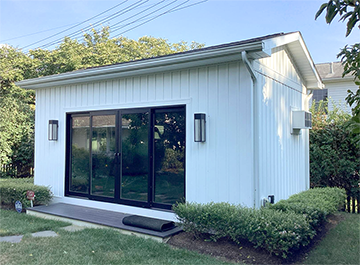This is a good article on what to be aware of if you are caught with hail or storm damage during those uncertain spring weather days…(courtesy of www.repacementcontractoronline.com(c) 2011 News Sentinel.
Provided by ProQuest LLC. All rights Reserved 05/08/11)
Source: News Sentinel
Publication date: May 8, 2011
With record hail damage in our area, it’s good to know that most insurance companies will send someone out to assess the damage and are good at helping customers. Hail can do serious damage to anything in its path.
I’ve witnessed everything from damaged roofs to demolished shrubs and trees.
- Things to look for to help assess your damage:
Roof – Hail can beat the life out of your roof. The amount of damage is directly related to the size of the hail and how long it lasts. Dime-sized hail can do damage but hail the size of golf balls or larger will destroy a roof in just a few minutes.
To inspect for damage you will need to get on a ladder (only climb where you feel safe) and look for damaged areas. Remember, a roof older than 10 years will have some uneven spots. If you see dents or divots where the granules are missing, your roof surface may need to be replaced. - Gutters – Aluminum gutters dent easily; look along the tops for dents. In high winds hail can damage downspouts. Check for dimples along gutters and down spouts.
- Chimneys or gas vents – Metal chimney caps and rain caps can be damaged by hail.
Chimneys should be inspected by roofing professionals with the proper equipment. Aluminum gas vent covers can be crushed by hail, but are easily replaced. - Flashing – Aluminum flashing along wall intersections and chimneys is subject to hail damage.
Step flashing is also susceptible and is not easily repaired. - Skylights – If you have skylights they should be inspected closely. The aluminum frames are subject to severe damage, and check for cracked or broken glass. Plexi-Glass dome types often get small cracks and should be looked at very closely.
HVAC units – Your outside heating and cooling units may have a few dents on top but this should not hurt performance. Look for damage to the coils along the side; if these are damaged the unit will not get good airflow. Leaks created by hail may also cause problems. If you suspect damage, notify a contractor to professionally inspect units. - Windows – Broken glass is easy to see, but you should also check for damage along the sash and trim.
Windows come in many different styles, but the vinyl trim along many brands is susceptible to breaking.
Screens are also simple to examine and fairly inexpensive to replace.
Check each window closely. - Siding – The type of cladding your home has will determine how much time it takes to inspect. Vinyl siding can be chipped, broken or have holes knocked through it by big hailstones. Brick and stone homes are unlikely to have problems. EIFS (synthetic stucco) does not perform well in hailstorms, so if you have EIFS look for dents and holes. This is not something a do-it-yourselfer can repair; get a professional to make needed repairs. Another thing to consider if you have stucco: If the windows are damaged, make sure the seal between the windows and stucco is finished correctly.
- Shrubs – Plants are often overlooked if your home has sustained serious damage. But you should call a professional for heavily damaged trees or shrubs, or spray the damaged areas with a fungicide to promote healing.
Donnie Bentley is the primary owner of Bentley & Associates LLC Home Inspection Services. Tennessee State Licensed and have been performing inspections for 14 years. He teaches Continuing Education for Realtors. Address questions to be*******@***il.com.
(c) 2011 News Sentinel. Provided by ProQuest LLC. All rights Reserved.
A service of YellowBrix, Inc.



